2.5 Unit 2 Body language Listening and Speaking(课件)
文档属性
| 名称 | 2.5 Unit 2 Body language Listening and Speaking(课件) |  | |
| 格式 | pptx | ||
| 文件大小 | 18.8MB | ||
| 资源类型 | 试卷 | ||
| 版本资源 | 牛津深圳版 | ||
| 科目 | 英语 | ||
| 更新时间 | 2022-12-16 10:45:21 | ||
图片预览

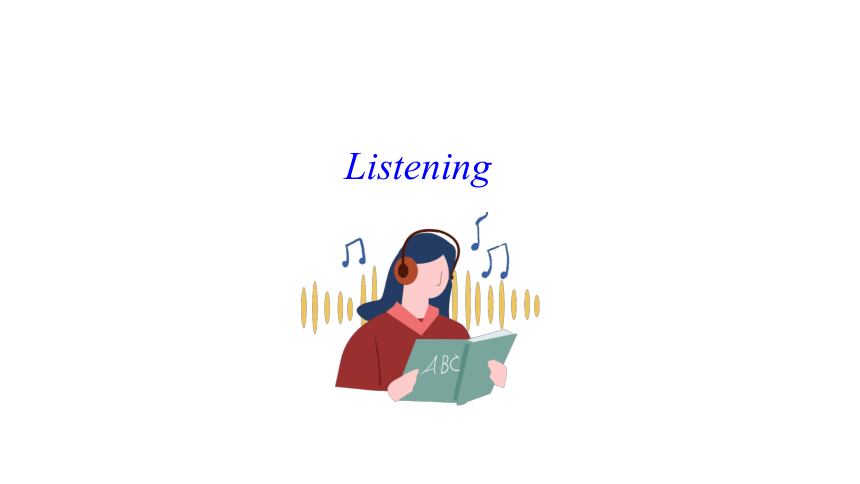

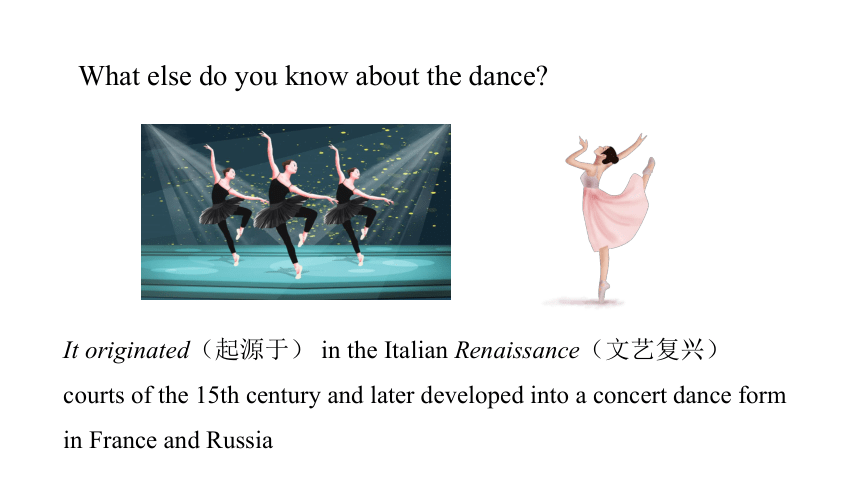
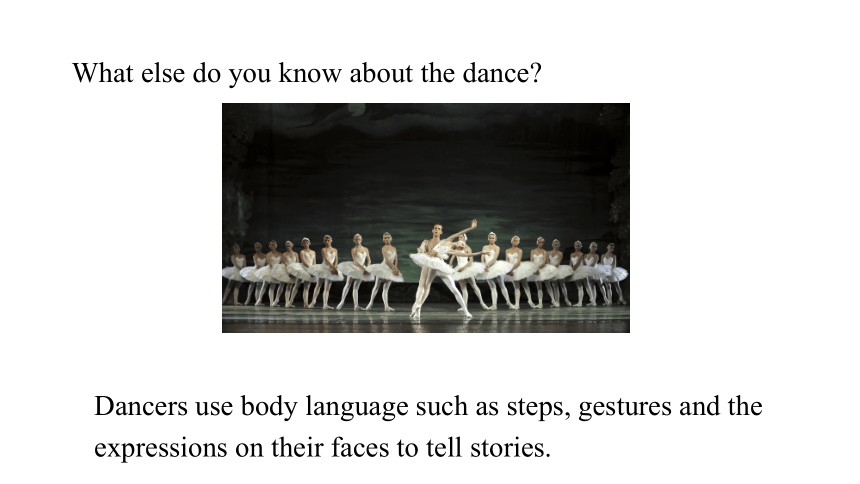
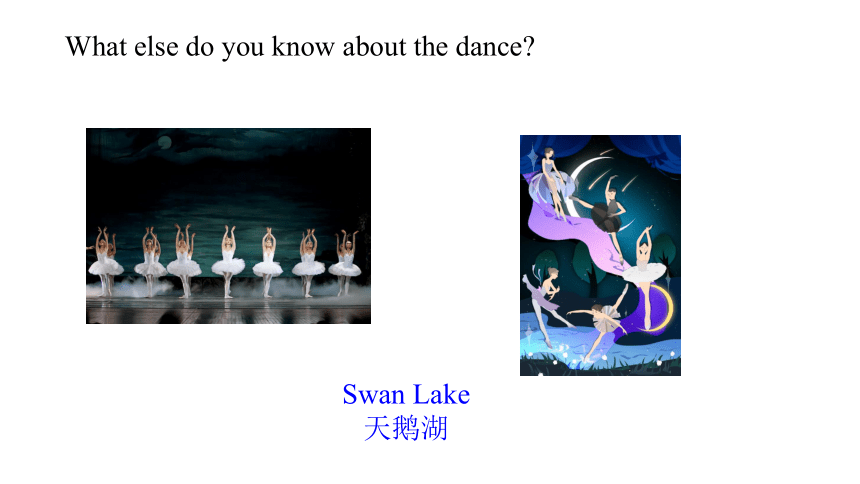


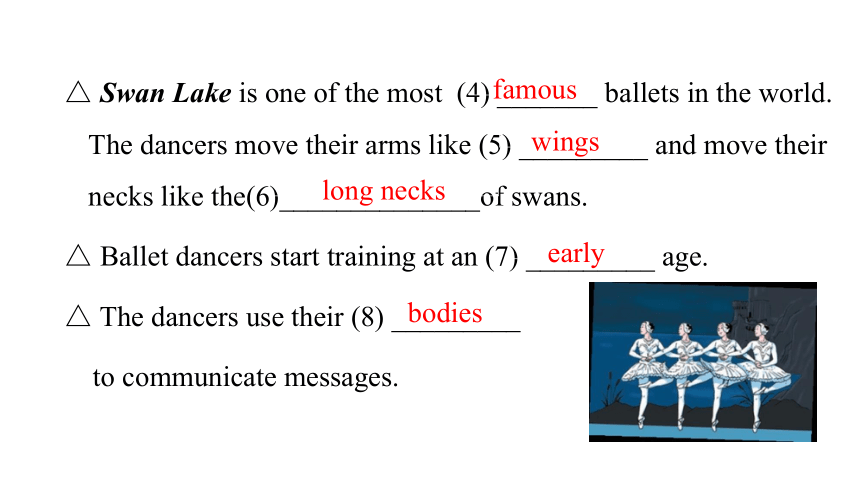

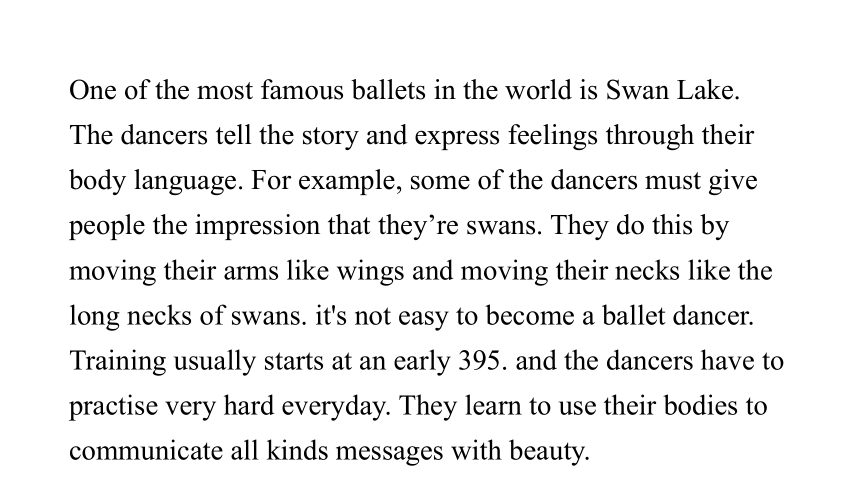

文档简介
(共35张PPT)
Unit 2
Body language
牛津深圳广州版八年级下册
Listening and speaking
Listening
1
课堂导入
What kind of dance can we see
It’s Ballet.
It is a type of performance dance
What else do you know about the dance
It originated(起源于) in the Italian Renaissance(文艺复兴) courts of the 15th century and later developed into a concert dance form in France and Russia
Dancers use body language such as steps, gestures and the expressions on their faces to tell stories.
What else do you know about the dance
Swan Lake
天鹅湖
What else do you know about the dance
Sleeping Beauty
睡美人
What else do you know about the dance
Listen to a speech about ballet and complete the notes below. Write one word in each blank.
Ballet
△Dancers use (1) _______ _______ such as steps, gestures and the expressions on their faces to tell stories.
△This type of dance started in (2) _________
Europe in the (3) ____ century.
body language
Western
15th
2
课堂活动
Ballet ---the language of dancers
△ Swan Lake is one of the most (4) _______ ballets in the world. The dancers move their arms like (5) _________ and move their necks like the(6)______________of swans.
△ Ballet dancers start training at an (7) _________ age.
△ The dancers use their (8) _________
to communicate messages.
famous
wings
long necks
early
bodies
Tape script
Ballet is a special form of art. It‘s a French Word. It means “to
dance”. There's no talking or singing in ballet. The dancers use
body language such as steps, gestures and the expressions on
their faces to tell stories.
Ballet began in Western Europe in the 15th century. Today it
has become popular all over the world.
One of the most famous ballets in the world is Swan Lake.
The dancers tell the story and express feelings through their
body language. For example, some of the dancers must give
people the impression that they’re swans. They do this by
moving their arms like wings and moving their necks like the
long necks of swans. it's not easy to become a ballet dancer.
Training usually starts at an early 395. and the dancers have to
practise very hard everyday. They learn to use their bodies to
communicate all kinds messages with beauty.
Speaking
3
课堂活动
Making, accepting and rejecting suggestions.
A Talk Time
In pairs, make conversations according to the situations below. You may use your own situations. Follow the example. Pay attention to the words in blue.
1 S2 wants to go somewhere nice during the summer holidays.
2 S2 keeps getting low marks in English and wants to improve.
3 S2 wants to buy a birthday present for his/ her friend.
1 S2 wants to go somewhere nice during the summer holidays.
S1: What’s the matter
S2: I’m thinking about going somewhere nice during the summer
holidays with my parents.
S1: Why don’t you go to Harbin It’s cool there in summer.
S2: I went there last summer.
S1: What about Qingdao The beach city is a perfect place for the
summer holidays.
S2: Qingdao is a good place, but it’s a bit far away from here. We
want a short trip.
S1: Well, you’d better find some ideas for a short trip in a travel
guide.
S2: That’s a good idea. Thank you.
S1: You’re welcome.
2 S2 keeps getting low marks in English and wants to improve.
S1: What’s the matter
S2: I’m thinking about improving my marks in English.
S1: Why don’t you ...
S2: ...
S1: What about ...
S2: ...
S1: Well, you’d better ...
S2: That’s a good idea. ...
S1: ...
S1: What’s the matter
S2: I’m thinking about buying a birthday present for my friend.
S1: Why don’t you ...
S2: ...
S1: What about ...
S2: ...
S1: Well, you’d better ...
S2: That’s a good idea. ...
S1: ...
3 S2 wants to buy a birthday present for his/ her friend.
Making suggestions:
1. Would you like / love (to do) sth. 你想要(做)……吗
——Would you like to go to the cinema with me
——Yes. I’d like / love to.
2. Shall I / we do sth. 我(们)做……好吗
Shall we go to the zoo
Making, accepting and rejecting suggestions
3. Let’s do sth. 咱们做……吧。
Let’s listen to this tape, shall we
4. 主语+had(‘d) better (not) do sth.. 某人最好(不要)做某事
You’d better go to hospital at once.
5. Why not/ Why don't you do sth. 为什么不……
Why not go and ask your teacher
=Why don’t you go and ask your teacher
6.What / How about (doing) sth. ……怎么样?
What about meeting outside the school gate
The useful expressions of accepting suggestions:
1. That's a good idea./ Good idea. 那是一个好主意。/ 好主意。
2. OK/All right. 好吧。
3. I'd love/like to. 我很乐意。
4. I agree with you. 我同意你的意见。
5. Yes, I think so. 是的,我也这样认为。
6. I will. 我会的。
The useful expressions of rejecting suggestions:
1. I don't think so. 我不这么认为。
2. Sorry, I can't. 对不起,我不能。
3. Sorry, but... 对不起,但是……
4. I’d love /like to, but ... 我很乐意,但是……
5. I'm afraid ... 我恐怕……
Match the phrases from the box with the correct pictures.
shaking one’s head
crossing one's arms shaking hands
nodding one's head shaking one's head
B Speak up
nodding one’s head
shaking hands
crossing one's arms shaking hands
nodding one's head shaking one's head
Now discuss the meaning of each gesture. Follow the example.
crossing one's arms
S1: Hi. Look at Picture 1. The man is
crossing his arms. What does it mean
S2: Maybe he's unhappy about something.
S1: I'm not sure. I cross my arms when I
feel cold.
S2: I think it means he's angry. Just look at
his face.
S1: Maybe you're right.
S1: Hi. Look at Picture 2. The man is
shaking his head. What does it mean
S2: Maybe he's ...
S1: I'm not sure...
S2: I think it means he's...
S1: Maybe you're right.
shaking one’s head
S1: Hi. Look at Picture 3. The man is
nodding his head. What does it mean
S2: Maybe he's ...
S1: I'm not sure...
S2: I think it means he's...
S1: Maybe you're right.
nodding one’s head
S1: Hi. Look at Picture 4. The man and the
woman are shaking hands. What does
it mean
S2: Maybe they're ...
S1: I'm not sure...
S2: I think it means they're ...
S1: Maybe you're right.
shaking hands
4
课堂小结
1.We have listened to a speech about ballet —the language of
dancers.
2. We have learned make, accept and reject suggestions.
3. We have discussed the meaning of some gestures.
5
课堂训练
一、模仿朗读
听以下短文一遍,给你50秒钟的时间准备,然后模仿朗读。当听到“开始录音”的信号后,立即在50秒钟内朗读短文,当听到要求“停止录音”的信号时,应立即中止朗读。
Eye contact means looking into another person’s eyes. This is a very important part of body language. It can be the key to communication. Eye contact can show feelings such as friendliness, interest and understanding.
In Western countries, using eye contact in conversations is very important. If you do not use eye contact, Westerners may think that you are not listening. And if you look away, they may also think that you are lying.
二. 情景问答
你希望向Linda了解更多肢体语言的情况,请根据以下提示向她提四个问题。
(1)你在与人交流时经常使用肢体语言吗?
【答案】Do you often use body language while talking
(2)你常用的肢体语言有哪些?
【答案】What kinds of body language do you often use
(3)我怎样才能改善自己的肢体语言呢?
【答案】How can I improve my body language
(4)我怎样才能正确地运用肢体语言呢?
【答案】How can I use body language correctly
三、思维导图复述
根据教材P19的课文内容完成下面的思维导图,再根据思维导图,复述该篇课文的内容。
参考答案:
1. stand and sit 2. looked down 3. feel welcome
4. walked over 5. his sister
课文复述
Debbie and Simon are students. They have part-time jobs at a travel company. One day, a well-dressed lady entered their office. Debbie greeted her cheerfully. Simon sighed and walked away. He didn’t know why the people chose Debbie instead of him. Then, Mr. Yang said communicating is more than just speaking. Body language is very important.
The way he looked at people didn’t give them a good impression. But Debbie held her head up. She always smiled and looked friendly. That’s why people went to her for help and not Simon.
谢谢
21世纪教育网(www.21cnjy.com)
中小学教育资源网站
兼职招聘:
https://www.21cnjy.com/recruitment/home/admin
Unit 2
Body language
牛津深圳广州版八年级下册
Listening and speaking
Listening
1
课堂导入
What kind of dance can we see
It’s Ballet.
It is a type of performance dance
What else do you know about the dance
It originated(起源于) in the Italian Renaissance(文艺复兴) courts of the 15th century and later developed into a concert dance form in France and Russia
Dancers use body language such as steps, gestures and the expressions on their faces to tell stories.
What else do you know about the dance
Swan Lake
天鹅湖
What else do you know about the dance
Sleeping Beauty
睡美人
What else do you know about the dance
Listen to a speech about ballet and complete the notes below. Write one word in each blank.
Ballet
△Dancers use (1) _______ _______ such as steps, gestures and the expressions on their faces to tell stories.
△This type of dance started in (2) _________
Europe in the (3) ____ century.
body language
Western
15th
2
课堂活动
Ballet ---the language of dancers
△ Swan Lake is one of the most (4) _______ ballets in the world. The dancers move their arms like (5) _________ and move their necks like the(6)______________of swans.
△ Ballet dancers start training at an (7) _________ age.
△ The dancers use their (8) _________
to communicate messages.
famous
wings
long necks
early
bodies
Tape script
Ballet is a special form of art. It‘s a French Word. It means “to
dance”. There's no talking or singing in ballet. The dancers use
body language such as steps, gestures and the expressions on
their faces to tell stories.
Ballet began in Western Europe in the 15th century. Today it
has become popular all over the world.
One of the most famous ballets in the world is Swan Lake.
The dancers tell the story and express feelings through their
body language. For example, some of the dancers must give
people the impression that they’re swans. They do this by
moving their arms like wings and moving their necks like the
long necks of swans. it's not easy to become a ballet dancer.
Training usually starts at an early 395. and the dancers have to
practise very hard everyday. They learn to use their bodies to
communicate all kinds messages with beauty.
Speaking
3
课堂活动
Making, accepting and rejecting suggestions.
A Talk Time
In pairs, make conversations according to the situations below. You may use your own situations. Follow the example. Pay attention to the words in blue.
1 S2 wants to go somewhere nice during the summer holidays.
2 S2 keeps getting low marks in English and wants to improve.
3 S2 wants to buy a birthday present for his/ her friend.
1 S2 wants to go somewhere nice during the summer holidays.
S1: What’s the matter
S2: I’m thinking about going somewhere nice during the summer
holidays with my parents.
S1: Why don’t you go to Harbin It’s cool there in summer.
S2: I went there last summer.
S1: What about Qingdao The beach city is a perfect place for the
summer holidays.
S2: Qingdao is a good place, but it’s a bit far away from here. We
want a short trip.
S1: Well, you’d better find some ideas for a short trip in a travel
guide.
S2: That’s a good idea. Thank you.
S1: You’re welcome.
2 S2 keeps getting low marks in English and wants to improve.
S1: What’s the matter
S2: I’m thinking about improving my marks in English.
S1: Why don’t you ...
S2: ...
S1: What about ...
S2: ...
S1: Well, you’d better ...
S2: That’s a good idea. ...
S1: ...
S1: What’s the matter
S2: I’m thinking about buying a birthday present for my friend.
S1: Why don’t you ...
S2: ...
S1: What about ...
S2: ...
S1: Well, you’d better ...
S2: That’s a good idea. ...
S1: ...
3 S2 wants to buy a birthday present for his/ her friend.
Making suggestions:
1. Would you like / love (to do) sth. 你想要(做)……吗
——Would you like to go to the cinema with me
——Yes. I’d like / love to.
2. Shall I / we do sth. 我(们)做……好吗
Shall we go to the zoo
Making, accepting and rejecting suggestions
3. Let’s do sth. 咱们做……吧。
Let’s listen to this tape, shall we
4. 主语+had(‘d) better (not) do sth.. 某人最好(不要)做某事
You’d better go to hospital at once.
5. Why not/ Why don't you do sth. 为什么不……
Why not go and ask your teacher
=Why don’t you go and ask your teacher
6.What / How about (doing) sth. ……怎么样?
What about meeting outside the school gate
The useful expressions of accepting suggestions:
1. That's a good idea./ Good idea. 那是一个好主意。/ 好主意。
2. OK/All right. 好吧。
3. I'd love/like to. 我很乐意。
4. I agree with you. 我同意你的意见。
5. Yes, I think so. 是的,我也这样认为。
6. I will. 我会的。
The useful expressions of rejecting suggestions:
1. I don't think so. 我不这么认为。
2. Sorry, I can't. 对不起,我不能。
3. Sorry, but... 对不起,但是……
4. I’d love /like to, but ... 我很乐意,但是……
5. I'm afraid ... 我恐怕……
Match the phrases from the box with the correct pictures.
shaking one’s head
crossing one's arms shaking hands
nodding one's head shaking one's head
B Speak up
nodding one’s head
shaking hands
crossing one's arms shaking hands
nodding one's head shaking one's head
Now discuss the meaning of each gesture. Follow the example.
crossing one's arms
S1: Hi. Look at Picture 1. The man is
crossing his arms. What does it mean
S2: Maybe he's unhappy about something.
S1: I'm not sure. I cross my arms when I
feel cold.
S2: I think it means he's angry. Just look at
his face.
S1: Maybe you're right.
S1: Hi. Look at Picture 2. The man is
shaking his head. What does it mean
S2: Maybe he's ...
S1: I'm not sure...
S2: I think it means he's...
S1: Maybe you're right.
shaking one’s head
S1: Hi. Look at Picture 3. The man is
nodding his head. What does it mean
S2: Maybe he's ...
S1: I'm not sure...
S2: I think it means he's...
S1: Maybe you're right.
nodding one’s head
S1: Hi. Look at Picture 4. The man and the
woman are shaking hands. What does
it mean
S2: Maybe they're ...
S1: I'm not sure...
S2: I think it means they're ...
S1: Maybe you're right.
shaking hands
4
课堂小结
1.We have listened to a speech about ballet —the language of
dancers.
2. We have learned make, accept and reject suggestions.
3. We have discussed the meaning of some gestures.
5
课堂训练
一、模仿朗读
听以下短文一遍,给你50秒钟的时间准备,然后模仿朗读。当听到“开始录音”的信号后,立即在50秒钟内朗读短文,当听到要求“停止录音”的信号时,应立即中止朗读。
Eye contact means looking into another person’s eyes. This is a very important part of body language. It can be the key to communication. Eye contact can show feelings such as friendliness, interest and understanding.
In Western countries, using eye contact in conversations is very important. If you do not use eye contact, Westerners may think that you are not listening. And if you look away, they may also think that you are lying.
二. 情景问答
你希望向Linda了解更多肢体语言的情况,请根据以下提示向她提四个问题。
(1)你在与人交流时经常使用肢体语言吗?
【答案】Do you often use body language while talking
(2)你常用的肢体语言有哪些?
【答案】What kinds of body language do you often use
(3)我怎样才能改善自己的肢体语言呢?
【答案】How can I improve my body language
(4)我怎样才能正确地运用肢体语言呢?
【答案】How can I use body language correctly
三、思维导图复述
根据教材P19的课文内容完成下面的思维导图,再根据思维导图,复述该篇课文的内容。
参考答案:
1. stand and sit 2. looked down 3. feel welcome
4. walked over 5. his sister
课文复述
Debbie and Simon are students. They have part-time jobs at a travel company. One day, a well-dressed lady entered their office. Debbie greeted her cheerfully. Simon sighed and walked away. He didn’t know why the people chose Debbie instead of him. Then, Mr. Yang said communicating is more than just speaking. Body language is very important.
The way he looked at people didn’t give them a good impression. But Debbie held her head up. She always smiled and looked friendly. That’s why people went to her for help and not Simon.
谢谢
21世纪教育网(www.21cnjy.com)
中小学教育资源网站
兼职招聘:
https://www.21cnjy.com/recruitment/home/admin
同课章节目录
